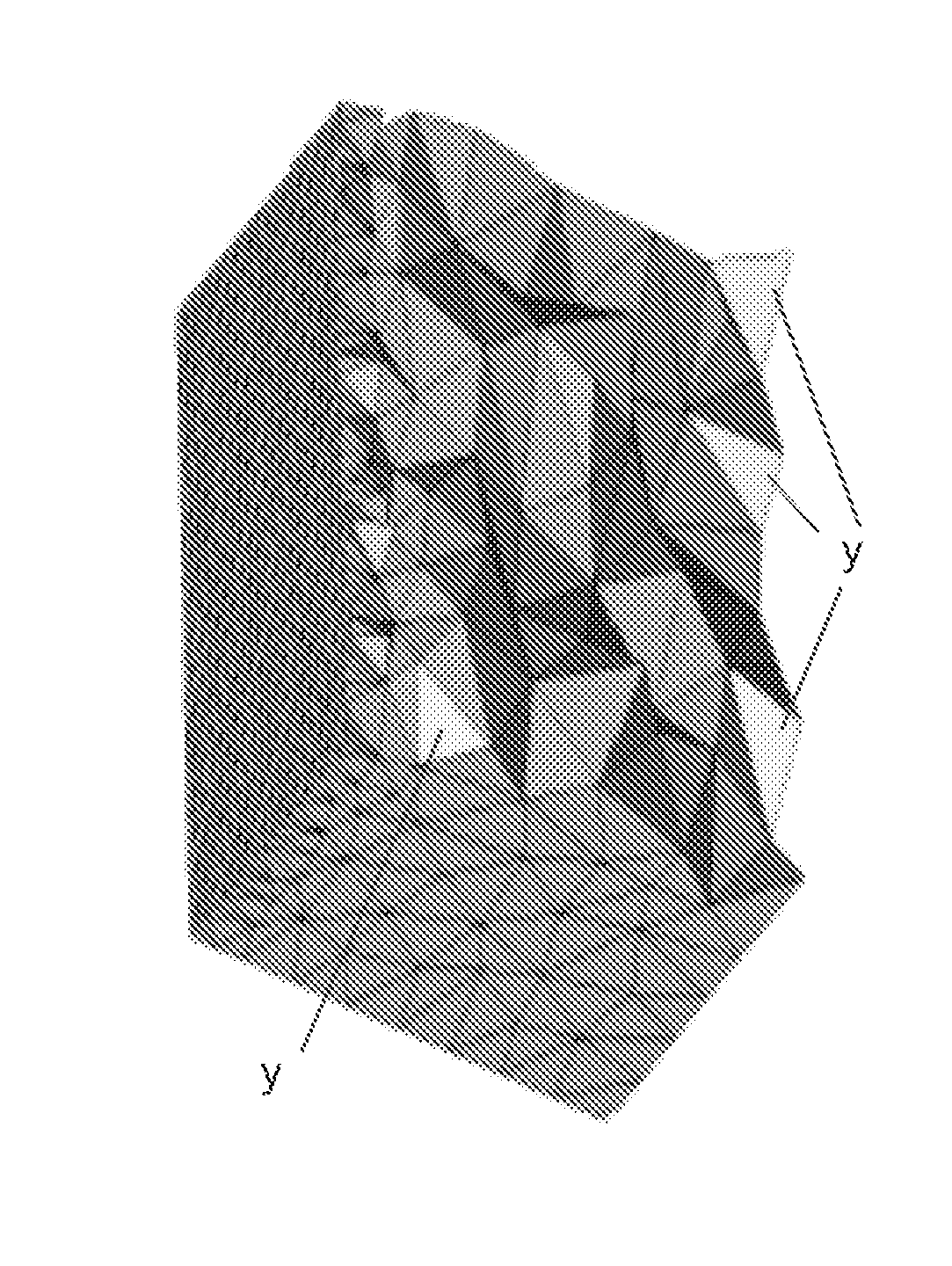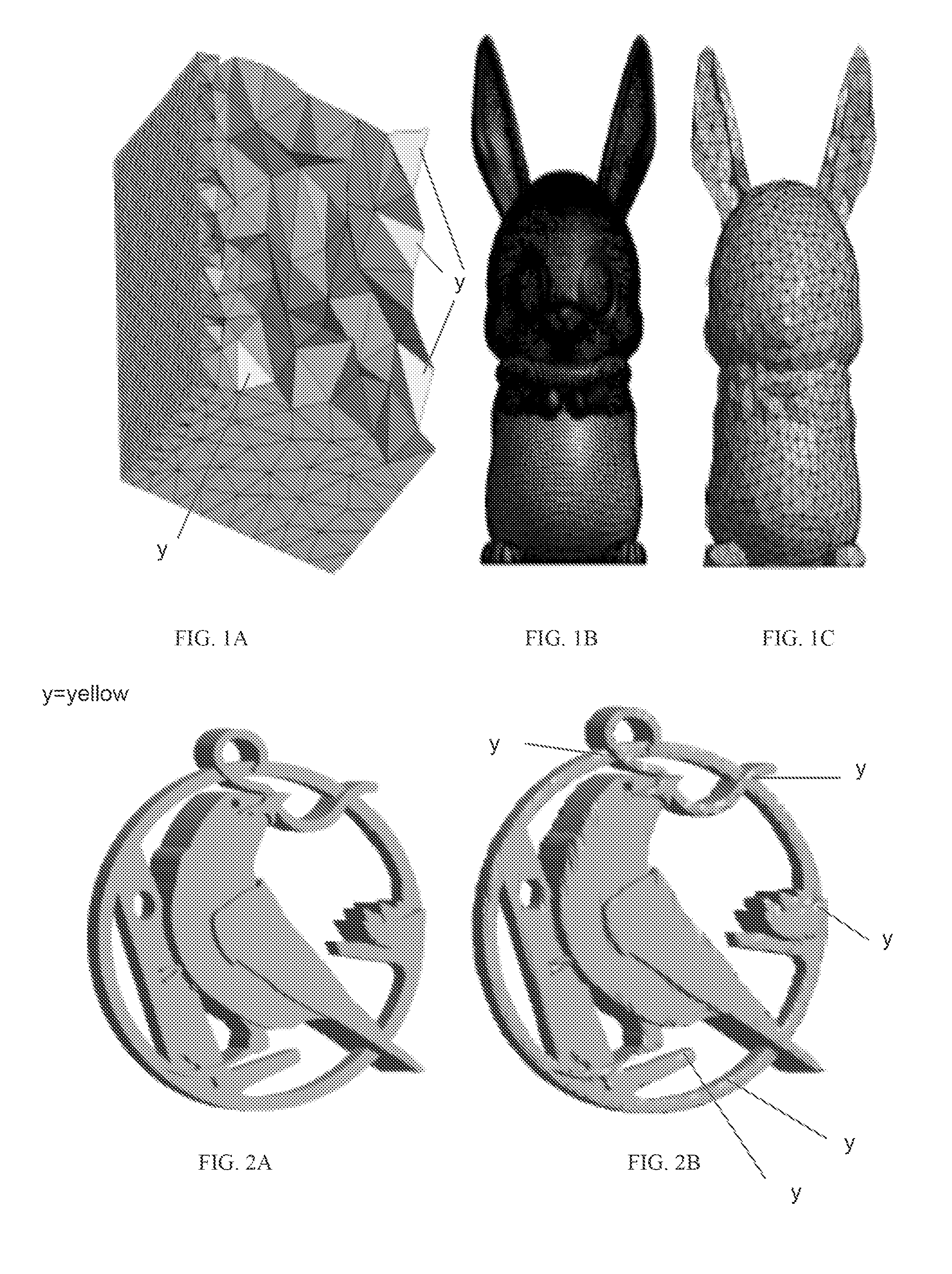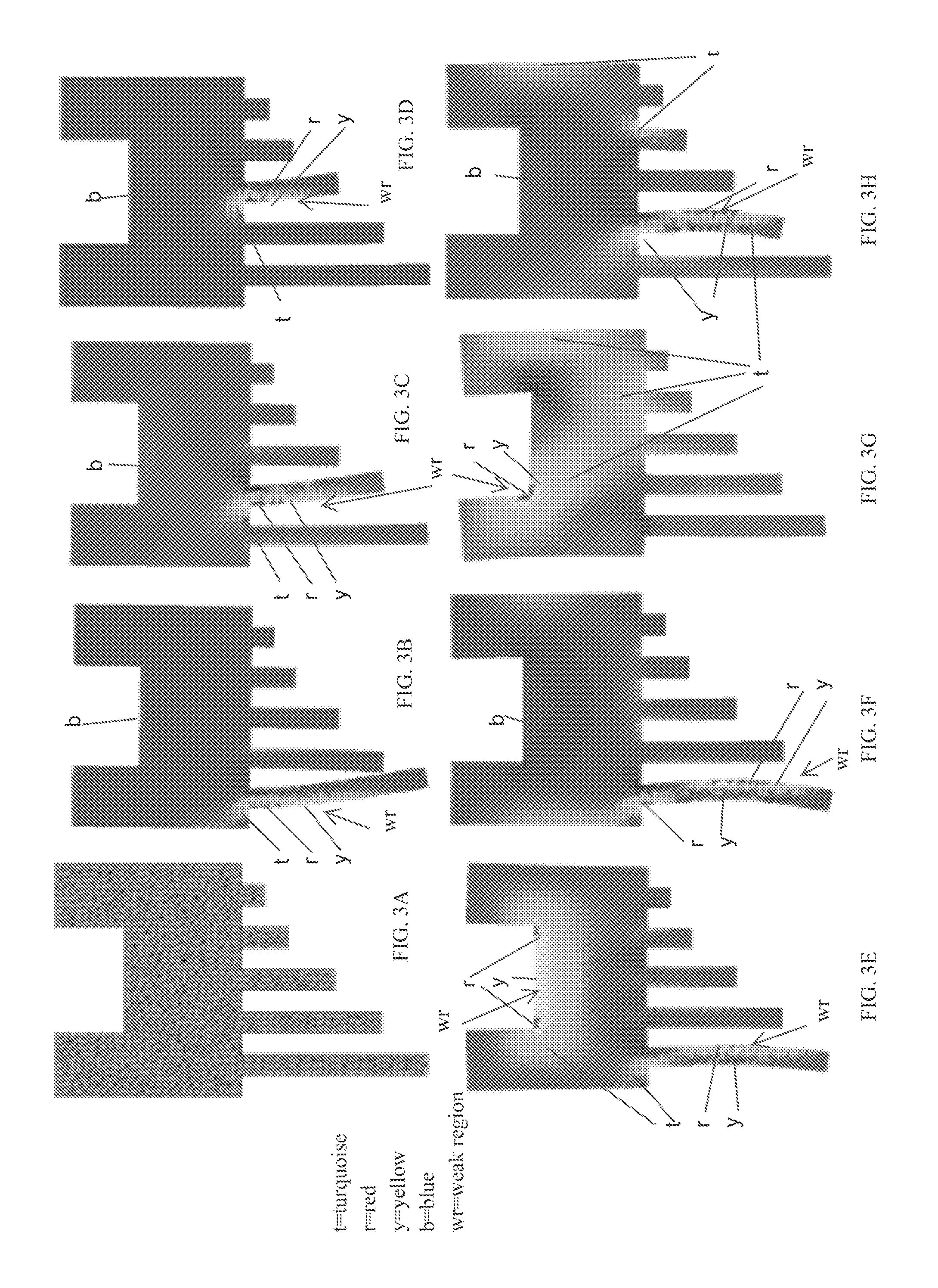Structural weak spot analysis
- Summary
- Abstract
- Description
- Claims
- Application Information
AI Technical Summary
Benefits of technology
Problems solved by technology
Method used
Image
Examples
first embodiment
[0060]In one most preferred embodiment of this first embodiment, the methodology applies a preprocessing step to produce a tetrahedron mesh (called a “tet” mesh in the rest of this document). The starting point for tet mesh generation, for which a variety of techniques and software are available, is a triangle mesh bounding a region of spacec, which can be easily obtained from most common shape representations. Most tet mesh generation techniques add vertices in the interior of the triangle mesh and construct tetrahedra connecting these vertices. As many additional vertices may be needed in the interior to maintain good tet mesh quality, for large input triangle meshes the process may result in very large tet meshes. To keep the time and memory requirements of modal analysis and force optimization within a reasonable range, the triangle mesh may be simplified before the tet mesh is generated, using one of many available feature-preserving mesh simplification methods. (see FIG. 1A).
[...
second embodiment
[0074]In the invention, in order to carry out the worst-case structural analysis, a formal description of the problem includes a computationally intractable formulation, but it is needed as a foundation for a practical and advantageous approximate version described hereinafter.
[0075]An anisotropic linear material model is used and the linear elasticity equations applied to model object behavior for the purposes of determining weak spots and worst-case force distribution. This model is adequate for some materials used in 3D printing, but nonlinear models may be necessary for others, as discussed in greater detail hereinafter. A distinction is emphasized that should be made between simulation with given loads used to determine precise stress distributions and computation used to determine approximate worst-case loads: lower accuracy is acceptable for the latter. The standard elasticity is included to introduce notation.
[0076]The stress-strain relationship is linear, and stress is rela...
PUM
 Login to View More
Login to View More Abstract
Description
Claims
Application Information
 Login to View More
Login to View More - R&D
- Intellectual Property
- Life Sciences
- Materials
- Tech Scout
- Unparalleled Data Quality
- Higher Quality Content
- 60% Fewer Hallucinations
Browse by: Latest US Patents, China's latest patents, Technical Efficacy Thesaurus, Application Domain, Technology Topic, Popular Technical Reports.
© 2025 PatSnap. All rights reserved.Legal|Privacy policy|Modern Slavery Act Transparency Statement|Sitemap|About US| Contact US: help@patsnap.com



